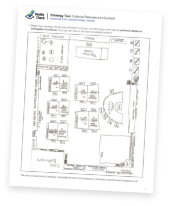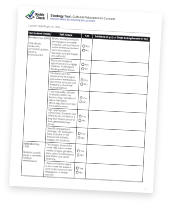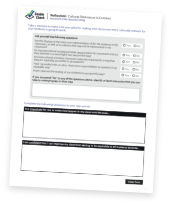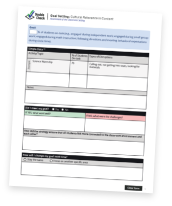Strategy: Cultural Relevance in Content
Check-Up Menu > Cultural Relevance in Content
When students see themselves in the physical classroom space as well as in the delivery and development of the lesson content, they will be more engaged in the learning. Consider when you see a place you have visited before when watching a movie or TV show. Most viewers will instantly feel a connection and their interest will be piqued as they begin to look for familiar places within the setting regardless of how “good” the movie or TV show is. The same can be achieved for students in the classroom when it is evident that the teacher has taken their interests into account when organizing the classroom environment and in developing the classroom curriculum. While it may be virtually impossible to ensure that ALL students see themselves in EVERY aspect of the classroom ALL the time, being able to see themselves consistently will engage them in the content and have them looking for themselves in the setting.
Culturally responsive teachers, along with their students, must be critical consumers of curriculum in order to make connections where they otherwise might not be and should enhance supplemental materials to increase cultural representation, accuracy, complexity, and authenticity of multiple levels of curriculum (Gay, 2002). Scholars have identified three levels of curriculum to create culturally responsive lessons and classrooms (Cortés, 1991, 1995, 2000; Gay, 1995; Gay, 2002). These three levels of curriculum are formal, symbolic, and societal. The Relevance Matrix strategy tool can be used to assess your curriculum across these different levels.
How To
Strategy Tool

- Classroom organization of desks and furniture
- Classroom displays
- Organization and access to classroom materials
- Seating arrangements for students
- Classroom roles and responsibilities

Reflection

Goal Setting


References to Other Relevant Resources:
Cortés, C. E. (1991). Empowerment through media literacy: A multicultural approach. In C. E. Sleeter (Ed.), Empowerment through multicultural education (pp. 143-157). Albany: State University of New York Press.
Cortés, C. E. (1995). Knowledge construction and popular culture: The media as multicultural educator. In J. A. Banks & C.A.M. Banks (Eds.), Handbook of research on multicultural education (pp. 169-183). New York: Macmillan.
Cortés, C. E. (2000). Our children are watching: How media teach about diversity. New York: Teachers College Press.
Gay, G. (2002). Preparing for culturally responsive teaching. Journal of Teacher Education, 53, 106-116.
Gay, G. (1995). A multicultural school curriculum. In C. A. Grant & M. Gomez (Eds.), Making school multicultural: Campus and classroom (pp. 37-54). Englewood Cliffs, NJ: Merrill/Prentice Hall.
Green, A.L., & Stormont, M. (2017). Creating culturally responsive and evidence-based lessons for diverse learners with disabilities. Intervention in School and Clinic, DOI: 10.1177/1053451217702114
Haberman, M. (1995). STAR teachers of children in poverty. West Lafayette, IN: Kappa Delta Pi.
Ross, D., Kamman, M., & Coady, M. (2008). Accepting responsibility for the learning of all students. In M. Rosenberg, D. Westing, & J. McLeskey (Eds.), Special education for today’s teachers (pp. 52-81). Upper Saddle River, NJ: Pearson.